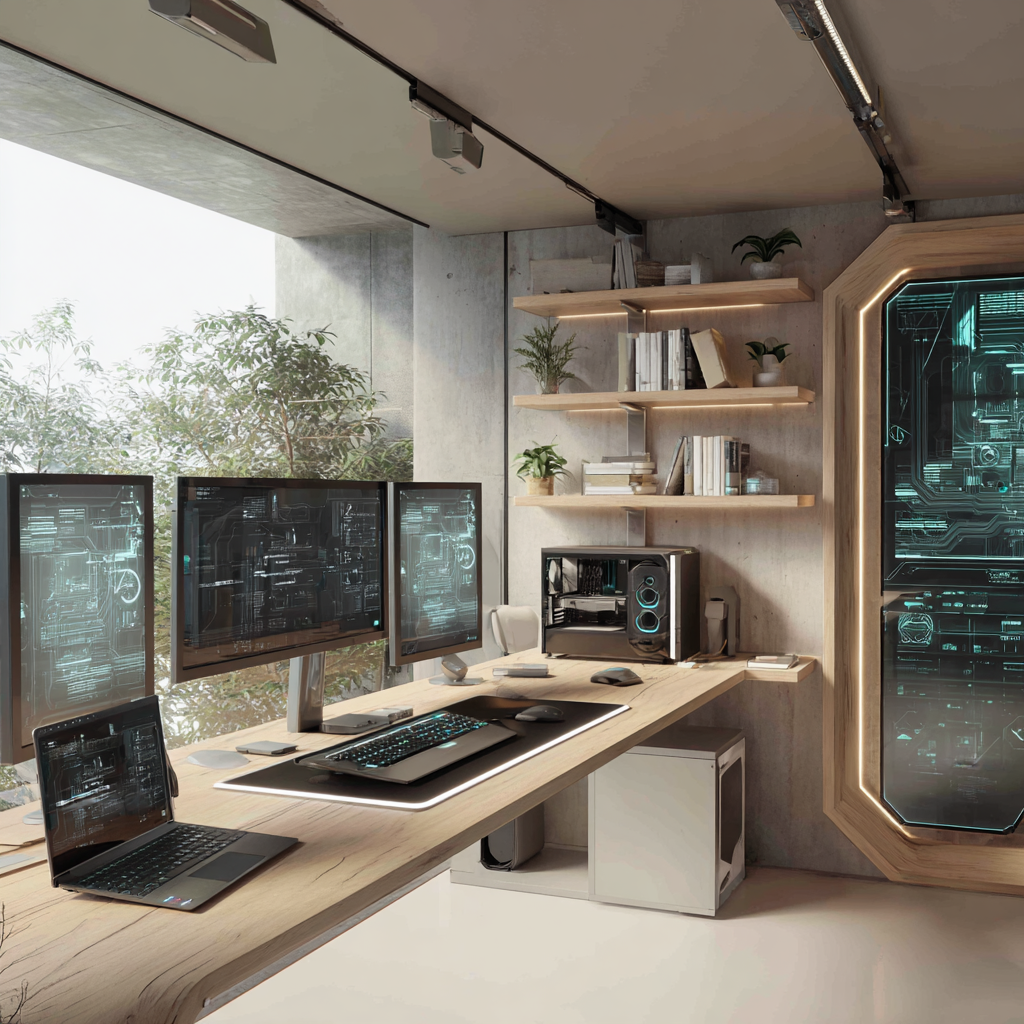How to make the most of workspace technology in 2025
Preface
Discover how to make the most of workspace technology in 2025. Boost productivity, collaboration, and efficiency with our expert insights.

How to make the most of workspace technology in 2025
The workspace in 2025 looks very different from what it was a few years back. The post pandemic era where companies are shifting to hybrid and remote workspaces, coupled with the advancements in the artificial intelligence and automation and digital customization have cumulatively worked towards increase in workspace technology 2025. Offices are no longer static work environments that would be defined by desk spaces and boardroom meetings but have shifted to a more flexible and sustainable ecosystem giving room for creativity and productivity to increase.
Leaders today are making the future of workspace tech in not just office buildings but in strategic decision making as well. It is about creating an environment that empowers productivity, attracting talent and resilience in a world that keeps updating every few minutes.
A 2024 Deloitte study found that 74% organizations consider that workspace technology gives a competitive advantage to business by providing investments to grow in double digits through 2030. The article discusses some workspace technology that is changing the environment and offers critical insights into the decision strategies.
- Rise in Hybrid workspaces
The post pandemic world has experienced hybrid mode of working at the comfort of their own home and companies are now offering more remote and hybrid jobs. According to McKinsey, 90% of organizations will adopt hybrid world models by the end of 2025. This resulted in optimization of office spaces with fewer desks, thus cutting costs and reducing unused spaces.
Dynamic desk booking system allows employees to reserve workplaces or meeting rooms in real-time. Occupancy sensors provide information on space utilization, enabling a smart way to manage employees. Cloud based tools allow remote and onsite teams to connect smoothly.
- Sustainability at the Core
Sustainability has become a must have tool in the enterprises. A Gartner survey states that 85% of executives view sustainability as top-three strategic priority. Workspaces today are using sustainability tools daily in various operations. Energy efficient lighting and HVAC systems powered by IoT sensors reduces energy waste.
Smart water systems and Digital monitoring dashboards help reduce resource consumption and also tracking the carbon footprint at every office. Siemens’ smart building solutions are able to reduce water usage up to 20% with automated leak detection. These tools not only reduce environmental impact but also help meet the ESG reporting standard supporting the green financing. Infosys highlights the use of a blockchain-driven tracking system that allows companies to monitor carbon emission in real time for ESG compliance.
- Tech-Enhanced Collaboration
Collaboration is the lifeline of technology and innovation. 2025 has seen a lot of projects that have worked in collaboration that have played a crucial role in productivity. Unified communications platforms are integrating chat, video, file sharing in a single interface.
Immersive video conferencing with augmented reality and virtual reality environments that are making remote meetings like face-to-face interactions. With AR and VR, employees can enter digital meeting rooms where avatars share 3D objects and replicate in-person collaboration.
Real-time transcription tools help bridge the gap between cultural and linguistic differences for companies operating globally. Technology today is empowering the teams to collaborate across the globe with much more ease, opening the market for new opportunities.
- AI automation to enhance productivity
AI automation is embedded in daily operations, even routine tasks will be automated by AI solutions. AI assistants are managing calendars, drafting documents and providing a summary of the meetings. Predictive analysis guides strategic decisions from supply chain to talent management. Intelligent document processing is reducing the manual task of data entry and compliance. With AI, repetitive tasks can be taken off the plate from employees, letting them focus on high value work of creativity.
- Increased Cybersecurity
As digital workspace is increasing it is giving room for increased cyber threats too. The global cost of cybercrime is expected to reach $10.5 trillion in 2025 (Cybersecurity ventures). Zero Trust security systems and AI threat detection ensure no user or device to trust automatically and real-time monitoring of data.As human error can lead to major breaches, employee cybersecurity training is crucial for smooth monitoring processes. Investments in security helps safeguard data and also builds brand reputation and trust.
- Smart Building Technology
Smart building is the epitome of digital and physical infrastructure. By 2025, Frost and Sullivan states that the global smart building market will surpass $120 billion. The IoT-enabled climate control system adjusts the weather of buildings as per the occupancy. Digital twin technology model office spaces to improve layout and maintenance.
Energy optimization learns about the consumption patterns and reduces costs, thus improving the employee comfort. The combination of AI, IoT, and data enables organizations to make faster decisions and smarter workflows. Dashboards that are driven by analytics provide real-time insights into the performance, use of resource and employee engagement. Also provides personalised workspace which helps optimize light, temperature and even digital tools according to individual employee preferences.
- Biophilic Design
Beyond technology, interior design also plays a pivotal role in shaping productivity and well-being of employees. Biophilic designs are an integration of natural elements such as greenery, natural light and organic textures into workspace design. Harvard research shows that employees working in biophilic spaces have reported 15% increase in well-being and productivity. As per the Editorial Institute, companies now are adding biophilic elements in digital infrastructure to create a more soothing and calm workspace to let employees' creativity breathe in.
The evolution of workspace has been experimental and fundamental in shaping the operations of the industry. Offices in 2025 are no longer defined by outdated building spaces but with digital and advanced technology integrations. Where Hybrid work modes reflect the new balance between office and remote work.
Sustainability technologies align business with the current environment needs. AI and automation enables productivity with the use of technology. Smart buildings, immersive technology and biophilic design make offices healthier and more inspiring.
Investing in the future of workplace tech is what makes companies stand out from their competitors today. Companies who are embracing workspace technology are able to tap into smarter workflows, empowered employees and workplaces that are built for tomorrow.

